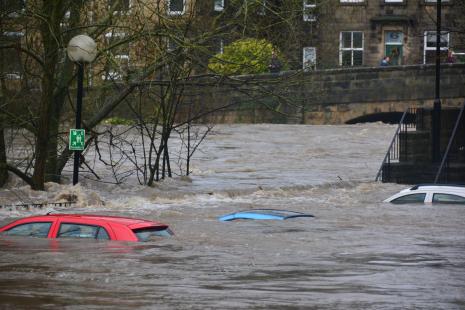Driving during periods of heavy rain or flooding can be dangerous for the drivers and the vehicle. It's essential to be aware of how to drive in these conditions safely.
Before travelling please check our traffic alerts for road restrictions or closures. If there are closures on non-trunk roads, check with your local authority.
Before you travel
Do you need to travel?
We may be used to rain in Wales, but heavy downpours can disrupt your journey. If there is surface water on the road, or if visibility is poor - check whether you need to travel.
Check the forecast
Plan and ensure you know the weather for the journey ahead.
Make sure your vehicle is prepared
You should ensure that your tyres have significant tread depth and pressure levels to reduce the likelihood of aquaplaning. Additionally, your wipers and lights should be working to provide visibility for you and other road users.
During your journey
Avoid floods
Flooding on the roads is dangerous for you and your vehicle. If there's water on the road, and you don't know its depth, you should find an alternative route.
Reduce your speed
Stopping your vehicle during rain or wet conditions can take up to four times longer, and you can quickly lose control of your car. Ensure you reduce your speed and leave plenty of distance between your car and the one in front.
If you breakdown
Breakdown numbers increase in the rain as dampness can cause problems with electrics and engines. If you do break down, keep your bonnet closed to prevent any further damage. Do not restart your machine if you've driven through deep water.
For additional resources, please follow the below guidance:

